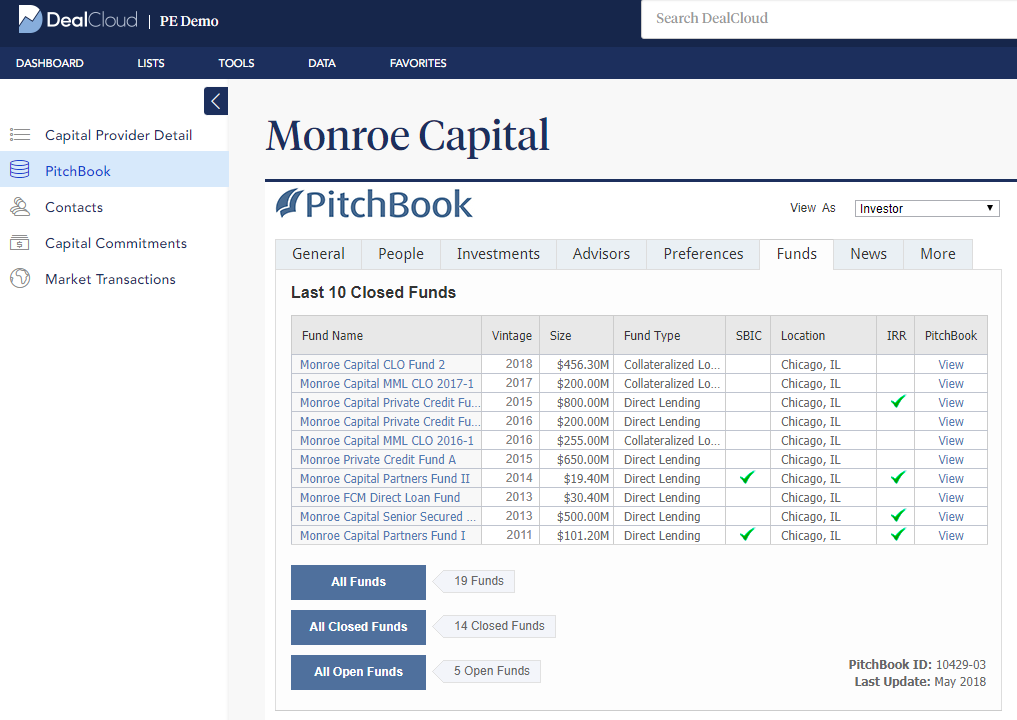For seasoned deal professionals, the majority of deals work out between two or more parties and the transaction closes as planned. But in other instances, an investment banker or fund manager’s M&A rolodex falls short. Especially for a more complex deal, new lending relationships become necessary very quickly. Far too many investment bankers and private equity investors overlook the value of lenders in their business development activities, which often leads to slower deal cycles and worse outcomes for clients.
In this article, we explore the three cornerstone best practices for initiating and maintaining an effective CRM for lender coverage at firms of all sizes.
1. Drill down into the details
As your team navigates hundreds (if not thousands) of business development activities in a given week, it’s easy to prioritize the Tier-1 and Tier-2 contacts. Attention, however, must still be given to lesser-contacted groups, such as lenders. And when that attention is given, the touchpoint needs to be productive.

One way of helping to streamline your firm’s relationships with lending groups is to categorize them based on the type of debt that they provide and the historical and recent deals that they have participated in. For example, when working on a Software/SaaS deal, it may be valuable to quickly pull the names of firms that offer revenue-based acquisition financing, and open the introductory conversation by referencing a recent transaction that they closed.
It’s now easier than ever to have transaction data already synced into your CRM. For example, DealCloud DataCortex now integrates with PitchBook, Sutton Place Strategies and DataFox, so it’s no longer necessary to mine that data manually. These types of smart and strategic moves can help strengthen a relationship regardless of the amount of time since the last touchpoint.
2. Build a solid foundation
Again, relationships with lending groups may not receive the majority of your team’s time and attention. One major reason for that is because debt is often simply viewed as a “commodity.” Nevertheless, partnering with a trustworthy, close partner is always more preferable than partnering with a brand new group.
That’s why, even when attending conferences, golf tournaments, or other events, it’s important to keep track of conversations and the relationships your firm develops over the years with lending groups. For example, staying up-to-date with a lender’s fundraising activity (and where in the current fund lifecycle they stand), can help you better understand their appetite for dealmaking, especially when a “hairy” deal is in play.

3. Be proactive and practice reciprocity
Business development activities shouldn’t only occur when your firm is “in market.” Best-in-class funds and investment banks place emphasis on new lending relationships by making time for introductory calls, knowledge-sharing, and meetings during business travel or industry conferences.
When discussing a potential deal with a lender, be sure to gauge their interest in other opportunities that have come across your desk when it’s appropriate to do so. This will show them that you understand their criteria and interests and are interested in a mutually-beneficial relationship. This type of behavior increases the likelihood that they’ll think of your firm when a perfect fit deal is presented to them.
Conclusion
Lender management may not be your top priority day-to-day, but effectively managing the information your firm has about lenders and their activity will inevitably lead to an expanded network of lenders, enhanced tracking of deal activity in the market, and a better financial position when executing on a deal.
To learn more about how to power your business development activities with technology, click here.
